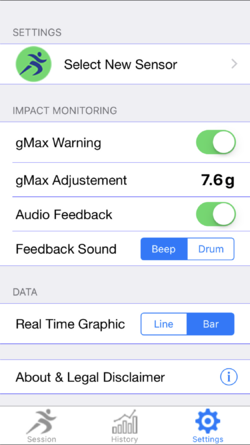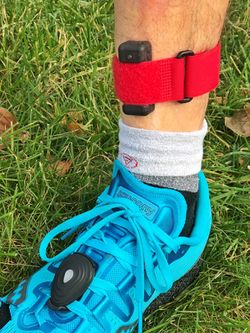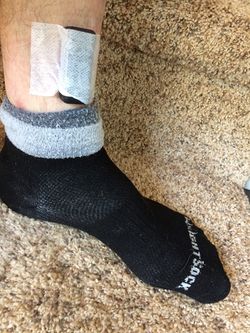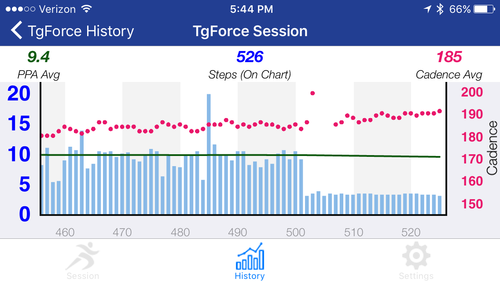TgForce Review
TgForce is a mixture of the fantastic and the flawed, but hopefully they'll be able to overcome these flaws which are entirely around bugs in their app and the final product will be one I can highly recommend. TgForce is a small sensor that straps to your lower leg, just above the ankle, measuring the impact on your Tibia (lower leg). TgForce is a little pricy given it measures just one thing, but that one thing might be quite important. The impact measured on your Tibia will be the impact that is felt at your knees and to a lesser extent the rest of your body. Running Sensors such as RunScribe and MilestonePod measure impact on your foot, and your foot and ankle are capable of absorbing significant amounts of impact. I believe that the measurement of impact at the lower leg is a far more useful and important metric, though I should stress that I do not have the science to back this up. TgForce will only work with an iOS application, so if you have an android phone (or no smartphone at all) you're out of luck. I don't like carrying a phone, but I found the real-time feedback from the TgForce is worth the annoyance. The application displays a graph of your Tibial impact, showing each individual foot strike rather than a smooth value. This is excellent for use on a treadmill where you can see how small changes in your Running Form affect your impact. When running outside it's harder to keep an eye on the screen, but the app provides real time audio feedback. You define an impact threshold in the app, and if you land harder than the threshold the application will beep. This beep occurs for each footstep that is over the threshold, allowing you to know instantly if you're doing the right thing or not. This is the only Running Sensor that provides this type of feedback, as others give you verbal "coaching" which I find far less useful. This would you feedback is far less intrusive than I expected, and I listen to music at the same time. Like other sensors, TgForce needs to be held in place so that it moves with your leg rather than bouncing independently. If you have it less than tight it will read far too high. The biggest downside to the TgForce is the rather buggy application which sometimes crashes mid-run, and will often crash if you swap applications or lock the screen while it's in use. The company has promised fixes to the application, but like many software projects the delivery is continuing to slip. I also had a number of hardware issues, but the company was excellent to work with and has remediated the manufacturing flaw so this should not occur again.
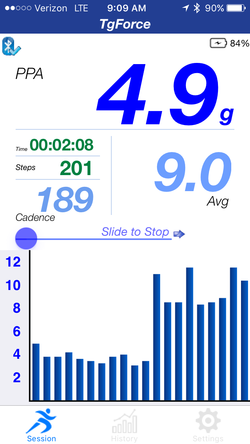 When you're running the TgForce app shows the impact acceleration of your last footstep, here shown as a large 4.9g, and each step is added to the bar graph at the bottom of the display. You can clearly see in this bar graph how my impact changes as I move to a forefoot landing. There's also a display of the average impact for this run, 9.0g in this case. There is a smaller display of the elapsed time, the number of steps, and Cadence. |
|
